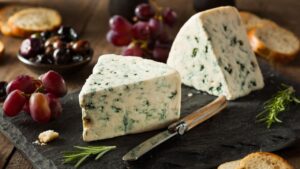Alliums are a family of vegetables that includes onions, garlic, leeks, chives, and shallots. Alliums have been used in cooking for centuries, and they are known for their pungent flavor and aroma. Alliums are also rich in antioxidants and other beneficial compounds, making them a healthy addition to any diet.
Shallots and onions are two of the most commonly used alliums in cooking, and they are often compared due to their similar appearance and flavor profiles. While they share many similarities, there are also key differences between the two, including their taste, nutritional content, and culinary uses.
The purpose of this article is to explore the similarities and differences between shallots and onions and to provide readers with a better understanding of how to use each vegetable in cooking.
What are Shallots and Onions?
Definition and characteristics of shallots
Shallots are a type of allium that look like small onions, but with a more elongated shape. Shallots have a mild, sweet flavor with a hint of garlic, and they are often used in French and Asian cuisine. Shallots are typically smaller than onions, and they have a paper-like skin that is easy to peel.
Definition and characteristics of onions
Onions are a staple in many cuisines around the world, and they come in a variety of sizes, shapes, and colors. Onions have a pungent, sweet flavor, and they are often used as a base for soups, stews, and sauces. Onions have a papery skin that can be difficult to peel, and they are usually larger than shallots.
A brief history of shallots and onions
Shallots are believed to have originated in Central Asia, and they have been cultivated for thousands of years. Onions have a similarly long history, with evidence of onion cultivation dating back to ancient Egypt. Both shallots and onions have been used for culinary and medicinal purposes throughout history.
Differences in Flavor
Chemical composition of shallots and onions
Shallots and onions both contain sulfur compounds that are responsible for their pungent aroma and flavor. However, shallots contain more of these compounds than onions, which gives them a more complex, nuanced flavor profile. Shallots also contain a compound called alliin, which converts to allicin when the shallot is cut or crushed. Allicin is responsible for the garlic-like flavor and aroma of shallots.
Taste and aroma differences
Shallots have a mild, sweet flavor with a hint of garlic, white onions have a stronger, more pungent flavor. Shallots also have a more delicate texture than onions, which makes them a good choice for dishes where a subtle flavor is desired. Onions, on the other hand, are often used as a base for more robust dishes.
Cooking applications for each
Shallots are often used in French and Asian cuisine, where their mild, sweet flavor complements delicate dishes like fish and shellfish. Shallots are also a key ingredient in many vinaigrettes and sauces, where their subtle flavor adds depth without overwhelming the other ingredients. Onions, on the other hand, are a versatile ingredient that can be used in a wide variety of dishes. They are often sautéed or caramelized to bring out their sweetness, and they are also used in stews, soups, and casseroles.
Nutritional value comparison
Macronutrient content
Shallots and onions are both low in calories and fat, but they are rich in nutrients like fiber, vitamins, and minerals. A 100-gram serving of raw shallots contains about 72 calories, 0.1 grams of fat, 16 grams of carbohydrates, 3 grams of fiber, and 7.5 grams of sugar. The same serving size of raw onions contains about 40 calories, 0.1 grams of fat, 9 grams of carbohydrates, 1.7 grams of fiber, and 4.2 grams of sugar.
Vitamin and mineral content
Both shallots and onions are good sources of vitamins and minerals, but shallots contain higher levels of certain nutrients. For example, shallots contain more vitamin A, vitamin C, and vitamin K than onions. Shallots also contain more minerals like iron, potassium, and manganese than onions.
Health benefits of each
Both shallots and onions contain compounds that have been linked to a variety of health benefits. For example, both vegetables contain flavonoids and sulfur compounds that have anti-inflammatory and antioxidant properties. These compounds have been linked to a reduced risk of chronic diseases like heart disease and cancer. Shallots, in particular, have been found to have anti-microbial properties and may help to fight off infections.
Culinary uses of shallots and onions
Types of dishes where shallots are commonly used
Shallots are often used in French and Asian cuisine, where they are prized for their delicate flavor. Shallots are a key ingredient in many classic French dishes, like beurre blanc and Coq au Vin. In Asian cuisine, shallots are used in stir-fries, curries, and noodle dishes.
Types of dishes where onions are commonly used
Onions are used in a wide variety of dishes, from soups and stews to salads and sandwiches. They are often sautéed or caramelized to bring out their sweetness, and they are also used raw in dishes like salsas and salads. Onions are a staple in many cuisines around the world, including Indian, Mexican, and Italian cuisine.
Using shallots and onions interchangeably
While shallots and onions have different flavor profiles, they can often be used interchangeably in recipes. For example, if a recipe calls for shallots but you don’t have any on hand, you can substitute onions instead. Just be aware that the flavor of the dish may be slightly different.
Growing and harvesting shallots and onions
Differences in growing conditions
Shallots and onions have slightly different growing conditions. Shallots prefer cooler temperatures and well-drained soil, while onions prefer warmer temperatures and soil with good fertility. Both vegetables are typically planted in the fall and harvested in the summer.
Harvesting and storing techniques
Shallots and onions are harvested in slightly different ways. Shallots are usually lifted from the soil and then left to dry for a few days before being stored. Onions, on the other hand, are often pulled up by the tops and then left to dry in the sun for several days before being stored. Both vegetables should be stored in a cool, dry place to prevent spoilage.
Popular varieties of each
There are many different varieties of shallots and onions, each with its own unique flavor and appearance. Some popular varieties of shallots include the French grey shallot and the banana shallot. Popular varieties of onions include red onion, Vidalia onion, and Walla Walla onion.
Availability and cost
Geographic availability of shallots and onions
Shallots and onions are widely available in most grocery stores and markets. However, the availability of different varieties may vary depending on the region and season. For example, some varieties of shallots may be more readily available in areas with a large French or Asian population.
Cost differences between shallots and onions
The cost of shallots and onions can vary depending on the variety and the region. In general, shallots tend to be more expensive than onions, as they are often considered a gourmet ingredient. However, the cost difference may not be significant enough to impact most home cooks’ budgets.
Conclusion
Shallots and onions may look similar, but they have distinct differences in flavor, nutrient content, and culinary uses. While both vegetables offer health benefits and can be used in a wide range of dishes, they are not interchangeable in all cases.
Understanding the differences between shallots and onions can help home cooks make more informed decisions when selecting ingredients and planning meals. So, whether you’re whipping up a classic French dish or a hearty soup, knowing when to use shallots or onions can help take your cooking to the next level.





